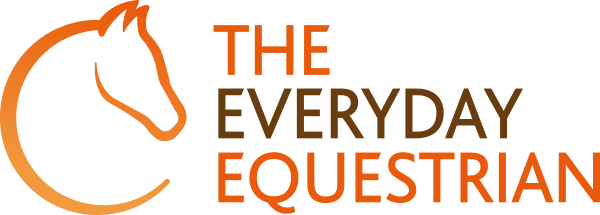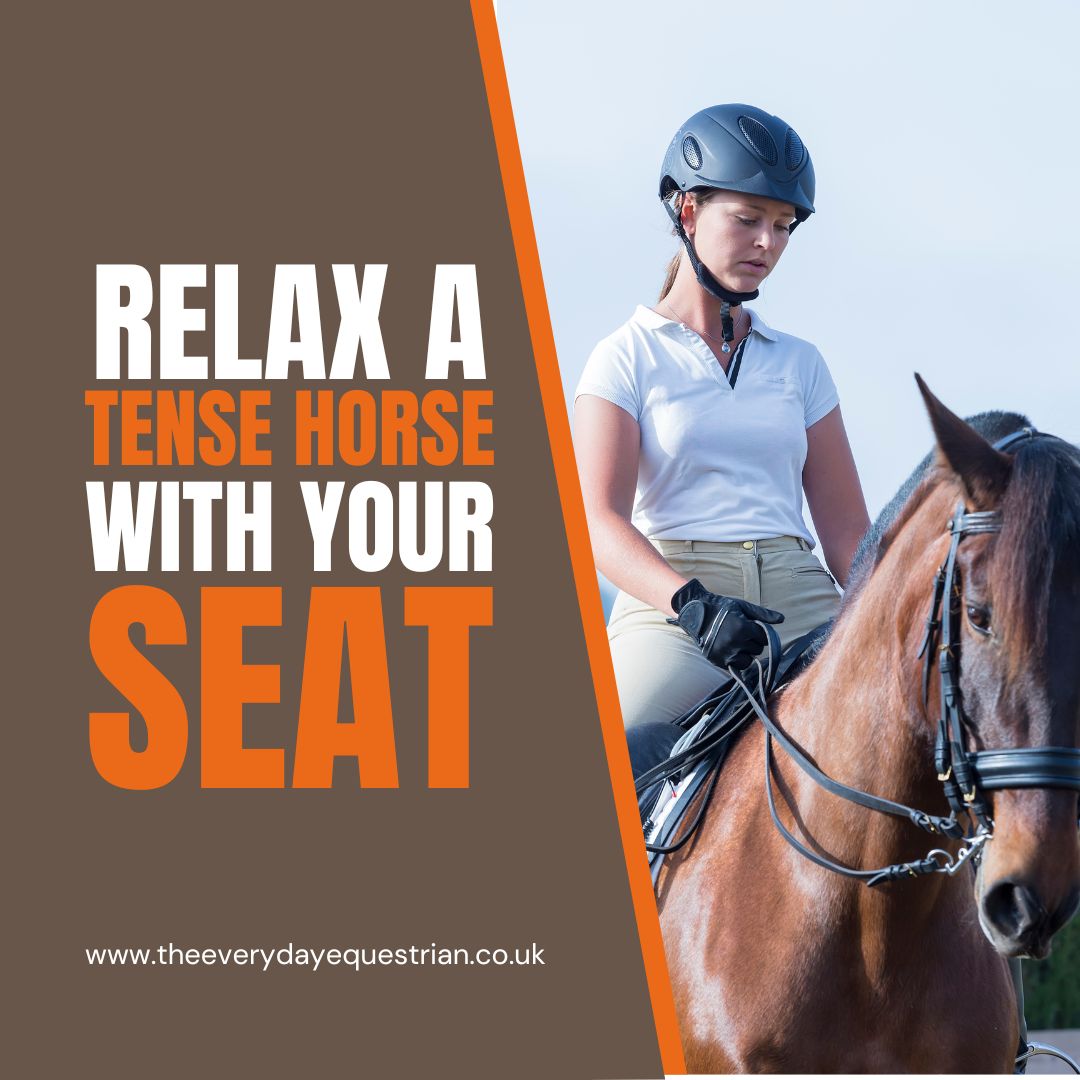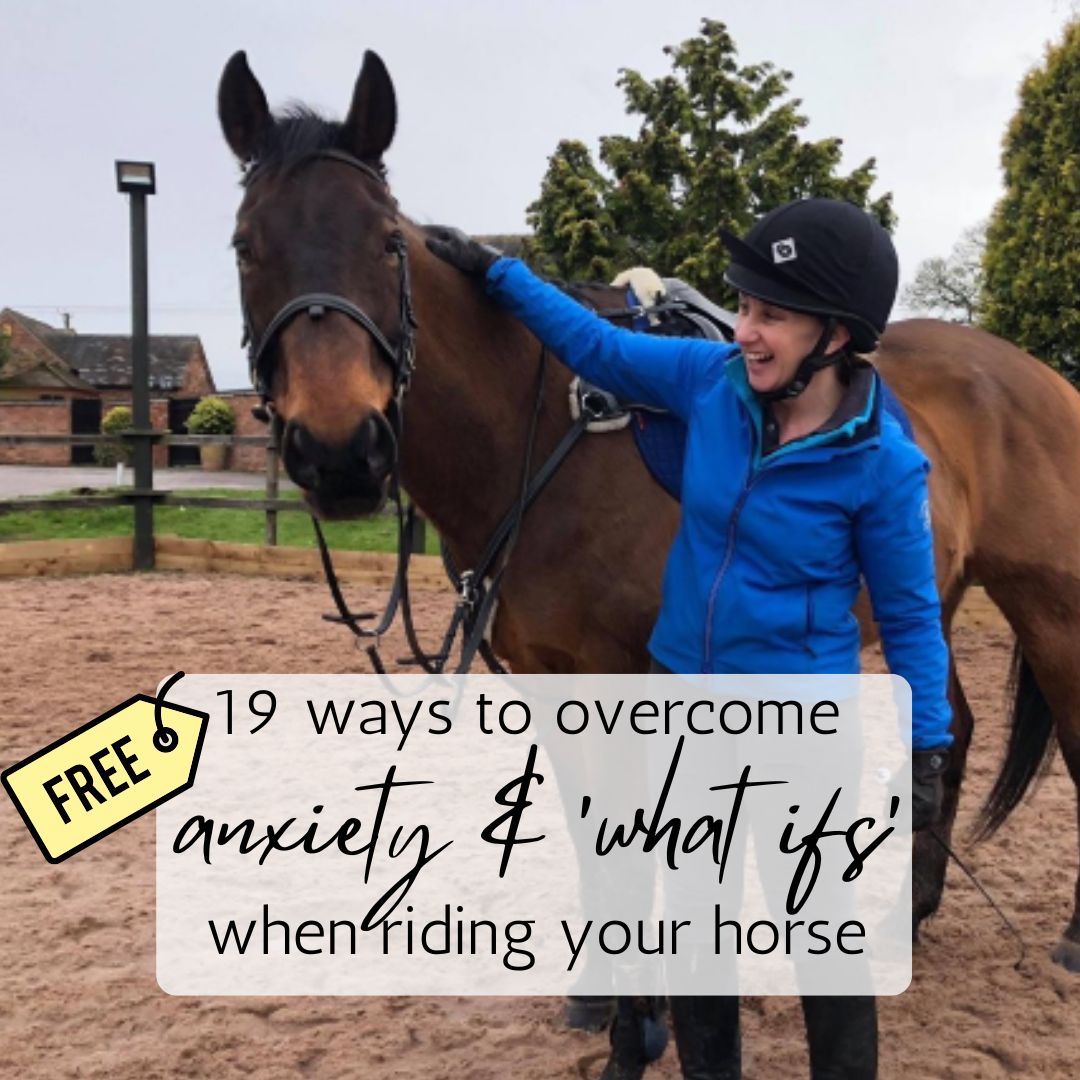Riding a tense horse isn’t always fun, and it can feel frustrating and challenging for the rider. There are so many ways to relax a tense horse, and in this article, I want to share a really simple and effective way to help the horse relax and move through his (or her) body so that your horse becomes more rideable and trainable.
I was working with a lady who was struggling with her tense, tight horse. During the warm-up at the start of her lesson, the mare was tight through her back, not tracking up, and what I would call ‘scooting’ along; her strides were short and tense. The rider looked like she was ‘perched on top’ of the horse, and trying to send the horse forward with her legs which only resulted in the mare jogging and becoming even more tense.
Now, I want to address the elephant in the room here and say that the horse was happy, comfortable, sound and her tack was correctly fitted. There were no behavioural signs of discomfort or pain, merely a level of tension through her body, and an inability to relax in the moment. That said, it was the very start of the session and the mare had just come out of her stable, so it was understandable that she hadn’t yet had the chance to physically and mentally loosen up.
Where are they?
I had asked the rider to check in with her seat bones and become more aware of how they were moving in response to the four-beat rhythm of the horse’s walk. She was quiet for a moment, then said “I can’t actually feel my seat bones, so I can’t feel how they’re moving!”. I absolutely love that she was able to share this with me; so often I have to dig around and question how much a rider really understands, and while I try hard not to make assumptions, we’re all human, right?
So we paused, she brought her horse to a halt, and while I held her horse she took her feet out of her stirrups and let her legs hang long. I asked her to drop her reins onto her horse’s neck (it was safe to do so), and place her hands underneath her bottom so they were between the rider and the saddle. I then asked her to gently move her pelvis side to side, forward and back, until she could feel the points of both seat bones. It took a little while, but she was surprised to discover that she did indeed still have seat bones! Interestingly, she noticed that she had more weight through her right seat bone than her left, and that the right seat bone was in a more forward position than the left. Hmm, things to work on here!
The rider took her stirrups and reins back, I asked her to move into walk and explore whether she could find both seat bones and check in with their position and weight distribution. She discovered that not only did her right seat bone sit more forward than the left, suggesting an underlying crookedness in her alignment, but she felt consistently more weight through her right seat bone too.
We progressed through walk and trot, it became apparent that as the rider became more aware of her seat bones, she began to move with the horse more easily. That’s not to say that she was pushing and shoving through her seat, no, absolutely not! Instead, the rider’s hips and pelvis were visibly softer, and she was better able to respond to the movement of the horse underneath her.
What happened?
The key outcomes of this was that the horse’s stride lengthened in both walk and trot. The mare lengthened her neck and began to relax and seek a more consistent contact in both reins. The rider sat with more poise, and while her hips were more mobile (not quite Shakira, but we’re working on it), she was quieter through the rest of her position; less tension overall and less nagging with her legs). Was it perfect? No. Was is progress? 100% yes.
So, why am I telling you this? Because taking the time to notice and get curious about what your body is doing, opens the door to discovery and allows space for different ways of thinking and feeling. The mind-body connection is very, very real, so in those moments of tension, for either horse or rider, it can be hugely beneficial to pay attention to the detail and dial into one particular area of our body, and get curious about what is happening there.
This does however come with a caveat… being curious about something requires an independent, non-judgemental approach. I see too many riders start to notice things and then use those elements of their riding as an excuse to beat themselves up.
I can promise you with absolute certainty, that every single rider on the planet has things to work on, things to improve, things to get better at, and the process is a wonderful journey of never-ending discovery. That’s the joy, right? So take a step back, find an obsession with learning and discovery, stay objective, and focus on finding ways to enjoy the process of enjoying your time with your horse, in whatever way is right for you.
So let me know if this resonates with you, and give it a try next time you or your horse are feeling the tension!


